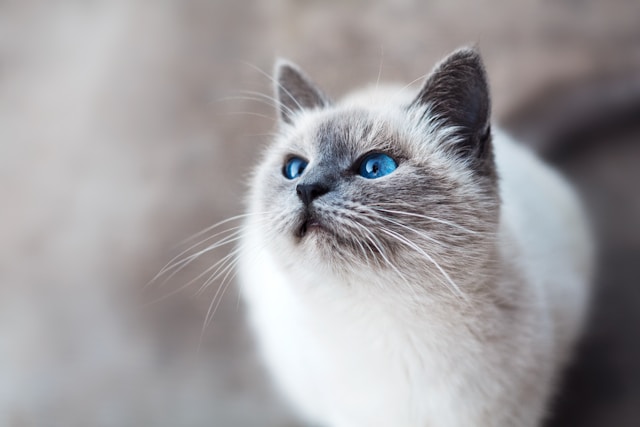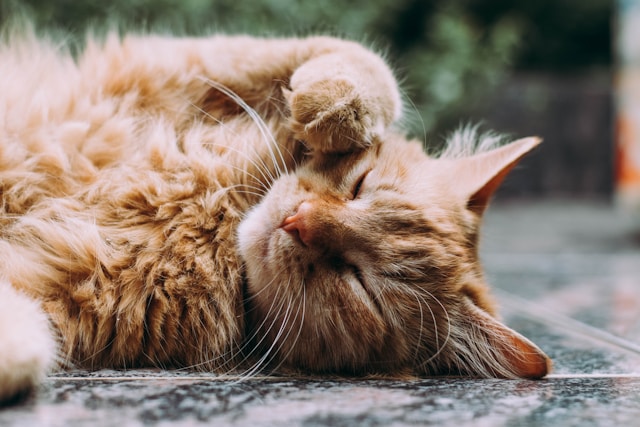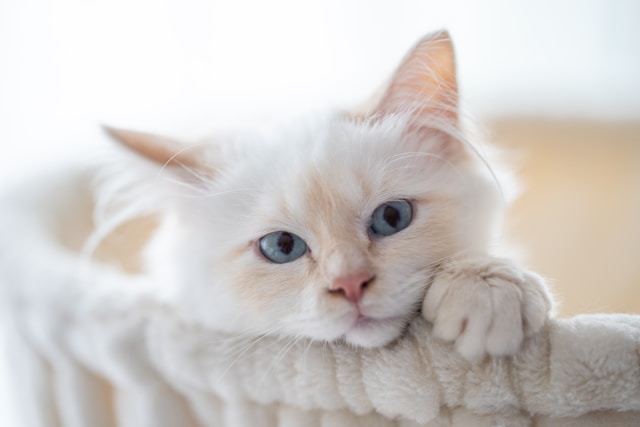Ocicat Cat Breed Information & Characteristics

The Ocicat is a unique and captivating breed known for its striking appearance and lively personality. This breed, which resembles a wild ocelot but is entirely domestic, has gained popularity for its elegant look and affectionate nature. In this comprehensive guide, we’ll explore the Ocicat’s history, physical characteristics, personality traits, care requirements, and more to help you decide if this breed is right for you.
History of the Ocicat
The Ocicat’s history is as fascinating as its appearance. Contrary to what its name might suggest, the Ocicat is not a hybrid of a domestic cat and a wild ocelot. Instead, it is the result of selective breeding, primarily involving Abyssinians, Siamese, and American Shorthairs. The breed was first developed in the 1960s by Virginia Daly, who aimed to create a domestic cat that resembled wild cats but retained a gentle temperament.
The first Ocicat litter was born in 1964, and the breed was officially recognized by major cat fancier organizations in the 1980s. Since then, the Ocicat has been admired for its exotic appearance and friendly nature, becoming a beloved choice among cat enthusiasts.
Physical Characteristics
1. Appearance:
The Ocicat is renowned for its exotic appearance, which closely mimics that of a wild ocelot. Here are some key physical features of the breed:
- Size: Ocicats are medium to large-sized cats with a well-muscled and athletic build. They typically weigh between 6 to 15 pounds, with males generally being larger than females.
- Body: They have a graceful and slender body with a long, smooth coat that lies close to the body. Their overall appearance is sleek and elegant.
- Head: The Ocicat has a wedge-shaped head with high cheekbones and a straight nose. Their large, almond-shaped eyes are typically gold or green.
- Ears: Their ears are medium-sized, set high on the head, and slightly pointed at the tips.
- Legs and Paws: They have long, slender legs with rounded paws, which contribute to their agile and athletic movement.
- Tail: The tail is long and tapering, with a distinctive ringed pattern.
2. Coat and Color:
The Ocicat’s coat is one of its most distinctive features. It is short, silky, and requires minimal grooming. The breed is known for its spotted coat, which resembles that of wild cats. Ocicats come in various colors and patterns, including:
- Spotted: This is the most common pattern, featuring a series of randomly placed spots on the coat.
- Classic: This pattern includes stripes, spots, and a combination of both.
- Color Variations: Ocicats can be found in a range of colors, including tawny, silver, bronze, and blue, among others.
Personality and Temperament
The Ocicat is not just a pretty face; it also has a delightful personality that makes it a great companion. Here are some key aspects of the Ocicat’s temperament:
1. Affectionate and Social:
Ocicats are known for their affectionate nature. They enjoy being around people and are often described as “people-oriented.” They thrive in environments where they receive plenty of attention and interaction from their owners.
2. Intelligent and Curious:
This breed is highly intelligent and curious. Ocicats are quick learners and enjoy engaging in interactive play and mental stimulation. They can be trained to perform tricks and respond to commands.
3. Active and Playful:
Ocicats are energetic and playful, requiring regular physical activity to keep them happy and healthy. They enjoy playing with toys, climbing, and exploring their environment. Providing them with scratching posts, climbing trees, and interactive toys is essential for their well-being.
4. Social and Friendly:
Ocicats generally get along well with other pets and children. Their friendly nature makes them adaptable to various household dynamics. They are often seen following their owners around and may even enjoy participating in family activities.
Care and Maintenance
Caring for an Ocicat involves addressing their physical and emotional needs. Here’s what you need to know:
1. Grooming:
Despite their luxurious coat, Ocicats require minimal grooming. Their short, silky fur is relatively low-maintenance, and regular brushing (about once a week) is usually sufficient to keep their coat healthy and free from mats.
2. Nutrition:
A balanced diet is crucial for maintaining the Ocicat’s health and vitality. High-quality commercial cat food, whether wet or dry, should provide the necessary nutrients. Consult with your veterinarian to determine the best diet based on your cat’s age, weight, and health status.
3. Exercise:
Given their active nature, Ocicats need regular exercise to stay fit and prevent obesity. Engage them in interactive play sessions and provide them with opportunities to climb and explore. Cat trees, tunnels, and puzzle toys can keep them mentally and physically stimulated.
4. Health Care:
Routine veterinary care is essential for monitoring the Ocicat’s health. Regular check-ups, vaccinations, and preventive treatments for parasites are important. Additionally, maintain their dental health by providing dental treats or toys and consider regular dental check-ups.
5. Environment:
Ocicats thrive in stimulating environments. Provide a safe and enriching space with plenty of vertical and horizontal surfaces to explore. They enjoy being part of family activities and should have access to a variety of toys and interactive items to keep them engaged.
Common Health Issues
While Ocicats are generally healthy cats, they can be prone to certain health conditions, including:
- Hypertrophic Cardiomyopathy (HCM): This is a common heart condition in cats. Regular veterinary check-ups can help in early detection and management.
- Obesity: Due to their playful nature, Ocicats can sometimes become overweight if not provided with adequate exercise and a balanced diet.
- Dental Issues: Like many cats, Ocicats can be prone to dental problems. Regular dental care and check-ups can help prevent significant issues.
Conclusion
The Ocicat is a breed that combines an exotic appearance with a delightful personality, making it a fantastic choice for many cat lovers. With their affectionate nature, intelligence, and playful demeanor, Ocicats can make wonderful companions in a variety of households. Their relatively low-maintenance grooming needs and adaptability further add to their appeal.
If you’re considering adding an Ocicat to your family, ensure you’re prepared to meet their needs for social interaction, mental stimulation, and physical activity. With the right care and environment, an Ocicat can be a loyal and loving addition to your home for many years to come.




